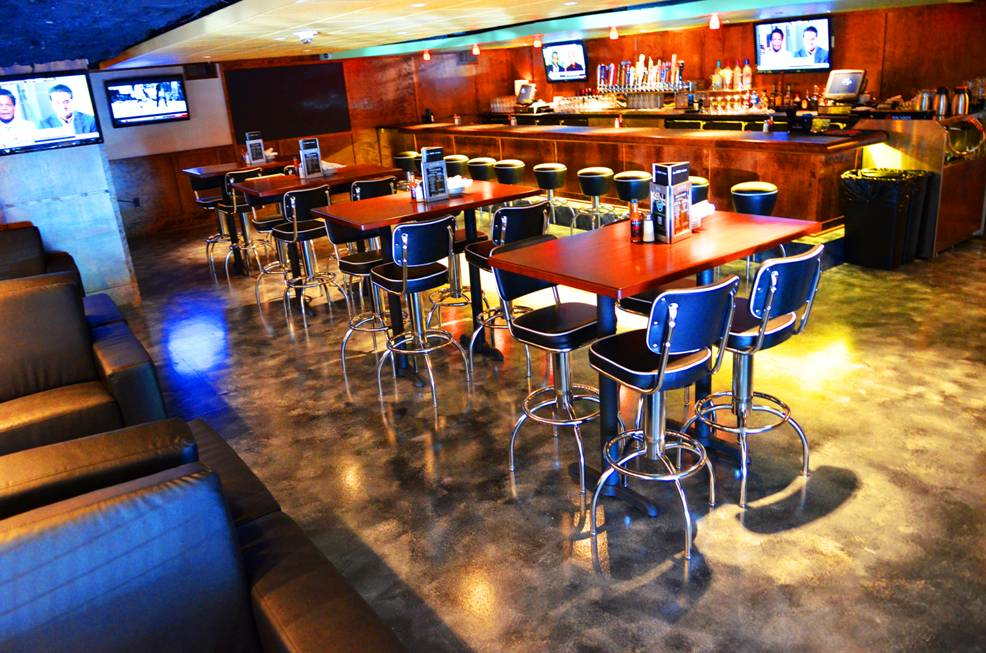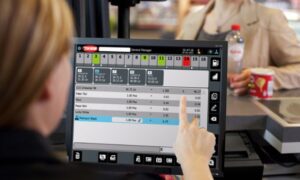In this blog, we’ll explore the key factors you should consider when selecting the right bar height for your restaurant. Whether you’re building from scratch or remodeling an existing space, these insights will help you create a bar area that enhances both guest satisfaction and employee productivity.
1. Standard Bar Height Guidelines
Before diving into the variables, it’s essential to understand the industry standards:
- Traditional bar height: 40 to 42 inches (101.6 to 106.7 cm) from the floor.
- Counter height (for food service or hybrid bars): 34 to 36 inches.
- Bar stool seat height: Typically 28 to 30 inches for a 42-inch bar height.
These standards have been developed to optimize comfort for seated patrons while allowing bartenders to work efficiently behind the bar. Deviating from these norms is possible, but only when justified by specific needs or unique design objectives.
2. Target Customer Experience
Your restaurant’s target demographic should heavily influence bar height decisions.
- Casual vs. Upscale: Casual restaurants often opt for lower counters to encourage relaxed, prolonged dining. Upscale venues may choose higher bar tops for a more refined, cocktail-focused vibe.
- Standing vs. Seated Guests: If your bar area is primarily for standing guests (such as at a nightclub), a 42-inch bar height is appropriate. However, for seated, full-service bar dining, consider integrating both standing and seated zones.
- ADA Compliance: Accessibility is paramount. The Americans with Disabilities Act (ADA) requires a portion of the bar to be no higher than 34 inches with appropriate knee clearance. If you’re in the U.S., this is not optional.
Tailoring your restaurant bar layout height to your guests’ expectations can increase dwell time and improve the overall experience.
3. Functionality and Workflow for Staff
Bar staff spend hours behind the counter, so ergonomics and workflow are key.
- Speed Rails and Sinks: These must be easily accessible, typically mounted just below the bar top for efficient drink preparation.
- Reachability: A height of 42 inches allows bartenders to serve guests without straining and maintain a smooth workflow for garnishing, pouring, and handling POS systems.
- Back Bar Height: Consider matching or stepping down the back bar for visual layering and ease of access to liquors, glasses, and equipment.
Overly tall or awkward bar setups can lead to repetitive strain injuries, spills, and slower service.
4. Barstool and Seating Coordination
Choosing the right seating is just as important as setting the height of the bar.
- Standard Barstool Height: For a 42-inch bar, stools should be 28 to 30 inches high.
- Footrests: Provide footrests on the bar frame itself (typically 12–18 inches off the floor) to avoid dangling legs, which can cause discomfort.
- Backrests and Padding: Comfort-forward stools with back support are better suited for longer dining or drinking sessions.
Barstools that are too short or too tall for your bar height can make guests feel awkward or uncomfortable, impacting their dining experience and likelihood of return.
5. Spatial Layout and Flow
The restaurant bar layout height also interacts with the overall spatial design of the restaurant.
- Sightlines: A taller bar top (42 inches) can partially block the view into the kitchen or service areas, helping maintain a clean, curated appearance.
- Zone Division: Bar height can define areas within an open-plan restaurant—offering a visual and functional barrier between dining and lounge spaces.
- Traffic Flow: Ensure enough clearance behind the bar (typically 30–36 inches) for staff movement and 18 inches of elbow room per patron at the front bar.
Consider how the bar’s height works with ceiling height, lighting fixtures, and walkways to avoid a cramped or unbalanced appearance.
6. Style and Branding Considerations
Your brand’s image should influence every design choice—including bar height.
- Rustic/Traditional Concepts: Often stick with standard 42-inch bar tops with wooden finishes.
- Modern/Minimalist Spaces: Might feature thinner countertops or lower heights to promote openness and approachability.
- Interactive Dining: If your bar includes a sushi counter or chef’s station, a 36-inch counter height may make more sense for ease of communication and plating.
Think of bar height as part of the storytelling process. A sleek, well-matched bar creates cohesion with your overall brand identity.
7. Multi-Level or Tiered Designs
Some restaurants opt for multi-tiered bars to separate functions:
- Drink Prep vs. Service Surface: A lower prep area (36 inches) behind the bar can reduce strain on bartenders, while a 42-inch front counter keeps guests at eye level.
- Split-Level Bars: Combining a lower ADA-accessible segment with a standard-height portion accommodates everyone without sacrificing style.
Tiered designs can offer functional benefits while adding a sophisticated architectural element.
8. Material and Countertop Thickness
Don’t forget that your final restaurant bar layout height includes the countertop thickness:
- Granite or Quartz Counters: Typically 1.25 to 1.5 inches thick.
- Wood or Composite Tops: May range from 0.75 to 1.25 inches.
If you’ve framed your bar to be exactly 42 inches from the floor, a thicker surface might unintentionally raise it to an uncomfortable height. Always account for the final build when planning measurements.
9. Compliance with Building Codes
Besides ADA regulations, there are often local codes to consider:
- Fire Safety: Clearance behind the bar may be regulated to allow quick exits.
- Plumbing and Drainage: Heights must accommodate underbar sinks and drainage systems.
- Electrical Access: If outlets or lighting are built into the bar top, coordination with height and seating is necessary.
Always check with your local building department before construction begins. A beautiful bar that fails inspection is costly to modify later.
10. Flexibility for Future Modifications
Restaurant concepts evolve. Choosing a bar height that supports versatility can be a long-term asset.
- Pop-Up Events or Chef Collaborations: Might benefit from a counter-height space.
- Seasonal Menus or Brunch Service: Could call for different seating configurations or add-on platforms.
- Technology Integration: Higher bars may allow hidden channels for lighting, charging ports, or POS systems.
Building in modular or removable features can keep your bar functional and stylish for years.
Final Thoughts
Selecting the right restaurant bar layout height is more than a measurement—it’s a strategic choice that affects guest comfort, staff efficiency, brand identity, and regulatory compliance. By considering who you’re serving, how your team will work, and the type of experience you want to create, you can craft a bar that elevates your restaurant’s overall success.
Remember to prototype with mock-ups when possible, gather feedback from both patrons and staff, and always consult with experienced contractors and interior designers. The right bar height may seem like a small detail, but in the hospitality world, it’s these subtle touches that make the biggest impact.



































